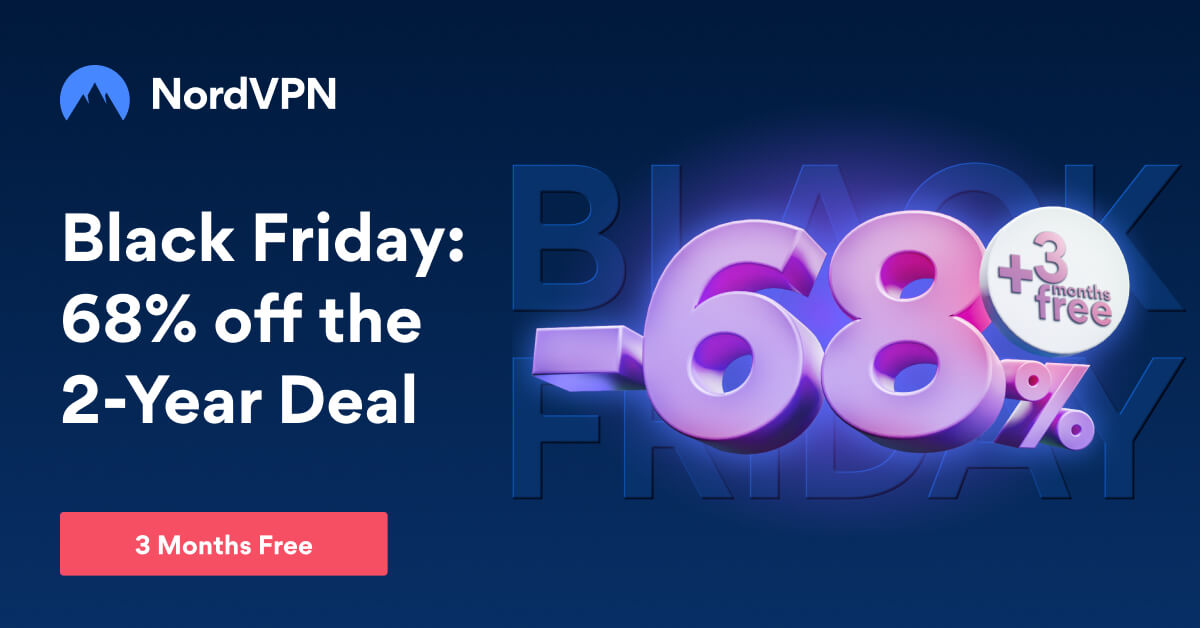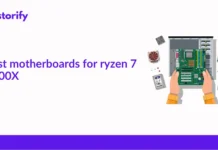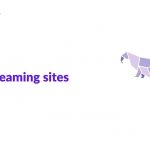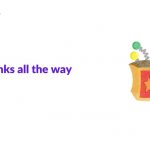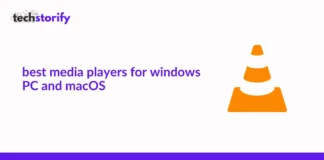In today’s times, with the involvement of so many sources like Oracle, SQL Server, etc. there seem to be a lot of solutions. One of the major reasons for this is the existence of Open Source, where any developer can put forward their ideas and create some unique solutions.
Another reason for this is the involvement of various fresh business models. These models help in maintaining an innovative community of their products for public recognition. While some other models provide a commercial offering.
Contents
What does it lead to?
The leads to better management of databases, as users can keep up with more databases. There might not be an exact number, but it can be guessed there are hundreds of these databases, which include mainstream stack-specific ones to those which were built by students in universities.
Although this might be good for some, at the same time, it causes trouble. With so many names to choose from, you will have to face dilemmas. So, to help you, we have created this list. You can find the top 10 Open Source DataBases solutions out there.
No MySQL:
This list would not consist of MySQL, since it is so mainstream that all of us are aware of it. Almost everyone learns MySQL only when starting this field. MySQL is supported by almost every CMS or framework in existence, and it is fit for mainly all of the usage scenarios. This means that you do not have to discover it, since we are pretty sure that you know about it already.
Again, since MySQL is so reliable and refined, the others which we are going to discuss in this write-up might not be its alternative. Some can be good enough, but others might not be perfect. But, this list includes some fantastic options, and we will discuss them in detail in the following sections.
You must also be familiar with the fact that compatibility is the key. For so many reasons, your project may or may not be compatible with an option. If your project does not support a database engine, then you don’t have a lot to choose from.
So, if you are using services like WordPress or JAMStack, then this write-up is not for you. You would not be able to change a lot by looking at alternatives.
Thus, you need to find a solution to the compatibility question. If you have done that bit, or don’t have to do it, then we shall now proceed with our list. So, the following names are the ten best open source databases that you should use for your next project.
List of the best open source database
1. PostgreSQL:
For the users from PHP nation, then Postgre is nothing less than an Alien to you. For others like Python, Ruby, etc. it has been one of the top picks since 1997.
Many developers even graduate to PostgreSQL for all the options that it offers, and for a smooth experience. It might not be possible to discuss all of the perks of PostgreSQL in this article, but you can consider it as a well-planned, an advanced open source database and a reliable product that will never give up on you.
For administrational and development purposes, there are many good SQL clients available for the PostgreSQL database.
Perks of PostgreSQL open source database:
PostgreSQL has tonnes of unique features as compared to other open source databases. These include:
- Built-in Array, Range, Geolocation, and more data types options.
- You get a native type of support for document storage.
- Allows synchronous and asynchronous replication.
- It can be scripted in PL, Python, Perl, and more.
- Permits full-text search.
- The major perks are geolocation. You will be able to benefit from it if you are on a project that requires you to point on a map. In some cases, you have to do that manually, while in this case, the product does it for you.
When To Use PostgreSQL?
If you have had a bad experience with MySQL, then it is about time to opt for PostgreSQL. It is always a preferred choice over any other relational database engine. There are masses who gave up MySQL to opt for PostgreSQL. If you decide to do the same, you won’t regret the decision.
If you need partial NoSQL facilities for a hybrid data model, then you get tonnes of advantages with PostgreSQL. It allows native support for key-value and document storage, so you don’t need to install them manually.
Why might PostgreSQL not be the best choice for you?
If your data model has very specific architectural requirements, then PostgreSQL might not be the best choice for you. It makes even less sense if your data is not relational.
Consider Analytics, for instance, new reports are continuously created from existing data. These read-heavy systems struggle when a strict schema is applied to them. With large datasets, the document storage engine also starts to struggle.
Thus, if you are not completely familiar with PostgreSQL, then you should not consider using it.
2. MariaDB:
The person who developed MySQL, an open source database also created MariaDB, as a replacement for MySQL. It happened when Oracle took over MySQL in 2010, the creator of MySQL, Michael “Monty” Widenius started his work on MariaDB.
It might seem to be a boring piece of trivia, but it is important to know. Because of the fact that MySQL and MariaDB were created by the same person, they both resemble almost completely. Hence, MariaDB can be used as a replacement for MySQL.
You would not be able to find a lot of differences between the two, that you would not believe how easy it is to shift from MySQL to MariaDB. However, if you try to go back from MariaDB to MySQL, then it is not possible. If you force the procedure, then you risk permanent database corruption!
Perks of MariaDB:
Although MariaDB used to be almost similar to MySQL when it was first made, it is not true anymore. With developments in both the products, this similarity is coming to an end. Thus, if you are considering shifting, then you should think properly prior to that. The following section will discuss the perks that you will get with shifting to MariaDB:
- Free and Open: You do not have to worry about licensing and other such issues. MariaDB is not controlled by a single corporate entity.
- Provides many options for storage engines and specialized needs. These include Spider engine for distributed transactions, ColumnStore for huge data warehousing, and many more.
- Due to the Aria storage engine, the MariaDB offers much higher speeds than MySQL
It offers better replication options than MySQL.
When you should consider MariaDB:
If you plan to never return to MySQL and want to stay innovative, then you should definitely opt for MariaDB. It will help to complement the existing data model with better storage engines.
Why might MariaDB not be the best choice for you?
Compatibility is the only major concern with MariaDB. But, over time, many new services have started to support MariaDB. These include WordPress, Joomla, among others.
3. CockroachDB:

The team responsible for CockroachDB was tired of the limitations of already existing SQL solutions. Earlier the SQL solutions were hosted on a single machine. So, there was not a single way to build a collection of databases running SQL.
To solve the issue, giants like MySQL, PostgreSQL, MariaDB, etc. released replication and clustering. But, it was not really effective. The team intends to change that with CockroachDB. They want to provide easy clustering in the world of SQL.
When you should consider using CockroachDB:
CockroachDB is everything that a system architect may ever want. If you have had bad experiences with SQL, and have witnessed the power of MongoDB, then CockroachDB is the way to go. You can easily set up a cluster and use queries, without hindering your sleep.
Why might CockroachDB not be the best choice for you?
CockroachDB is a relatively new product, so you might not want to struggle with it in the long term. If you are doing well with your RDBMS, and if you think that you can manage to continue with it, then you should not give it up. You can also struggle with compatibility issues. If you are relying on it for critical things, then it can cause troubles that you wouldn’t want.
4. Neo4j:

A good example of justifying this statement is social networks. To build such databases using any document-based databases and SQL is nothing less than a nightmare.
Such solutions use graphs as their ideal data structure, thus, you need to use a graph database like Neo4j for the task. With Neo4j, you can connect and create certain tasks, which are impossible to do by other SQLs. It is an open source database which offers a fully managed cloud service.
Perks of Neo4j:
- There are not a lot of graph databases, so the majority of the features you get with Neo4j are perks in themselves.
- It supports graphs and transactional applications.
- It has the ability to digest large-scale tabular data into graphs.
- It has a specialized query language called Cypher for a graph database.
- Some very useful visualization and discovery features.
There is no point in discussing the scenarios where you do not need Neo4j. If you need a graph-based interaction with your data, then you need it, and at times when you don’t, you can skip using it.
5. MongoDB:

As we said earlier, MongoDB is a Non-Relational Database, which means it is a document database. Hence, it stores data in chunks, while the others store data in piles.
Another difference between MongoDB and others is the structure of data. Unlike the renowned table-based method, the data and access levels of a user are stored inside the same object in MongoDB. If you need the user object, then the related data will be provided automatically.
Perks of MongoDB:
Some of the significantly good perks and features have made veteran users break ties with other relational solutions. These include:
- A flexible schema for various use cases.
- It is really easy to do sharding and clustering. You need to set up the right configuration, and that is it.
- It is super easy to add or remove a node from a cluster.
- A function called Distributed Transactional Locks has recently been introduced.
- Highly efficient for analytics data as a caching system with very fast writes.
Why might MongoDB be the best choice for you?
MongoDB is a sweet amalgam of the structured world of SQL to the confusing world of NoSQL. It leads in making prototypes since you don’t need to worry about a schema. Although you can use a cloud SQL service for the same purpose too, they are really expensive in comparison.
There are many instances where SQL-based solutions will just give up. If you need to make a product like Canva, where edits are made later, then you really need to use something like MongoDB.
Why might MongoDB not be the best choice for you?
While lack of schema might be a necessity for some, it will be a high disadvantage for others. If you do not know what you are doing, then it might be a no for you. Some of the errors include data mismatch, dead data, and so much more. So, before opting for MongoDB, then you should make sure that you know everything about it.
6. RethinkDB:

When a database is updated, then there are no ways for the application to know. The approved approach is to send a notification whenever there is an update. This later gets pushed to the front-end through a complex bridge.
But what would happen if the update could be pushed directly to the front end from the database.
For that, RethinkDB makes a commitment. So, if you plan to work on a real-time application, like a game, marketplace, etc. then this service is worth a shot.
7. Redis:

It is really easy to learn about the Redis database. It won’t take longer than ten minutes to do so! Redis uses a key-value store that stores strings within an expiry time limit. This time limit can be set to infinity as well. Although Redis loses some features, it helps faster speeds and performance. It accommodates the RAM, so read and write speeds are really fast.
The database is highly attractive on Redis since it uses a pub-sub system. So, if you have a project that needs caching or some distributed components, then Redis is the way to go!
8. SQLite:

Perks of SQLite:
- It is lighter than any other SQL out there, and yet is a strong competition.
- Full support for transactions.
- It supports up to 32000 columns per table.
- It has 64-way JOIN support.
- The maximum database support is around 140Terabytes!
- It is more than 30% faster than the file I/O.
Why might SQLite be the best choice for you?
SQLite works on a simple principle, no stress on useless stuff, and gets things done easily. If your app is easy to use and you don’t want to bother about a full set of databases, then SQLite is the way to go. This open source platform is even better for small and mid-sized and even demo applications.
Why might SQLite not be the best choice for you?
Since SQLite covers only the important sources of requirements, it lacks certain features. You do not get the full-stack experience that you might get on other applications. Also, you have to miss on features like the client to connect, exploring the database, and even query. Also, as the size of the project increases, the performance starts to deteriorate.
9. Cassandra:

Cassandra is a member of the Columnar family of Databases. The open source platform works in columns instead of rows. This helps to drastically reduce the write times since the data is stored physically together on the disk.
Perks of Cassandra:
- The major reason to choose Cassandra is zero tolerance for downtimes.
- It offers super-fast writing performances. IT is one of the fastest databases.
- You can add as many nodes and clusters as per your needs.
- Appreciable partition tolerance keeps good performance without losing integrity.
10. Timescale:

It is different from mainstream ones as:
- General-purpose databases can’t handle time-based data, as they are not optimized. Thus, they are much slower than time-series databases.
- Removing data and changing the schema is not really an option, because the database has to handle huge amounts of new data.
Takeaway:
All of the open source database discussed in this writeup are the big boys in the Big Data world. They help to maintain both, the structured data and the unstructured data, which makes it easier to manage with Big Data.
We hope we were able to help you select a new option for your database requirements. If you have any questions, feel free to ask us in the comments section. For more such informative articles and guides, make sure to keep visiting us.

